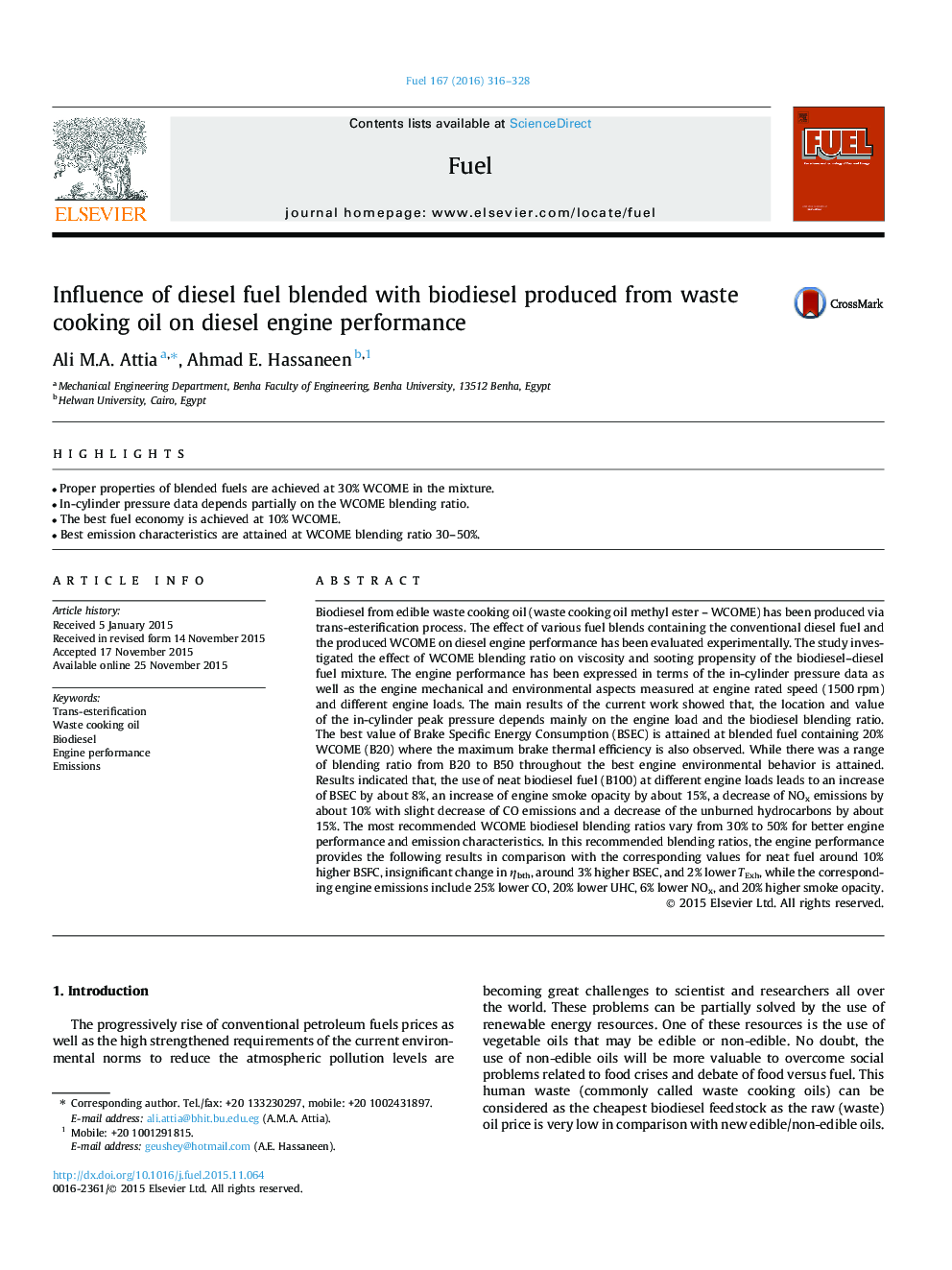| کد مقاله | کد نشریه | سال انتشار | مقاله انگلیسی | نسخه تمام متن |
|---|---|---|---|---|
| 205358 | 461105 | 2016 | 13 صفحه PDF | دانلود رایگان |
• Proper properties of blended fuels are achieved at 30% WCOME in the mixture.
• In-cylinder pressure data depends partially on the WCOME blending ratio.
• The best fuel economy is achieved at 10% WCOME.
• Best emission characteristics are attained at WCOME blending ratio 30–50%.
Biodiesel from edible waste cooking oil (waste cooking oil methyl ester – WCOME) has been produced via trans-esterification process. The effect of various fuel blends containing the conventional diesel fuel and the produced WCOME on diesel engine performance has been evaluated experimentally. The study investigated the effect of WCOME blending ratio on viscosity and sooting propensity of the biodiesel–diesel fuel mixture. The engine performance has been expressed in terms of the in-cylinder pressure data as well as the engine mechanical and environmental aspects measured at engine rated speed (1500 rpm) and different engine loads. The main results of the current work showed that, the location and value of the in-cylinder peak pressure depends mainly on the engine load and the biodiesel blending ratio. The best value of Brake Specific Energy Consumption (BSEC) is attained at blended fuel containing 20% WCOME (B20) where the maximum brake thermal efficiency is also observed. While there was a range of blending ratio from B20 to B50 throughout the best engine environmental behavior is attained. Results indicated that, the use of neat biodiesel fuel (B100) at different engine loads leads to an increase of BSEC by about 8%, an increase of engine smoke opacity by about 15%, a decrease of NOx emissions by about 10% with slight decrease of CO emissions and a decrease of the unburned hydrocarbons by about 15%. The most recommended WCOME biodiesel blending ratios vary from 30% to 50% for better engine performance and emission characteristics. In this recommended blending ratios, the engine performance provides the following results in comparison with the corresponding values for neat fuel around 10% higher BSFC, insignificant change in ηbth, around 3% higher BSEC, and 2% lower TExh, while the corresponding engine emissions include 25% lower CO, 20% lower UHC, 6% lower NOx, and 20% higher smoke opacity.
Journal: Fuel - Volume 167, 1 March 2016, Pages 316–328
